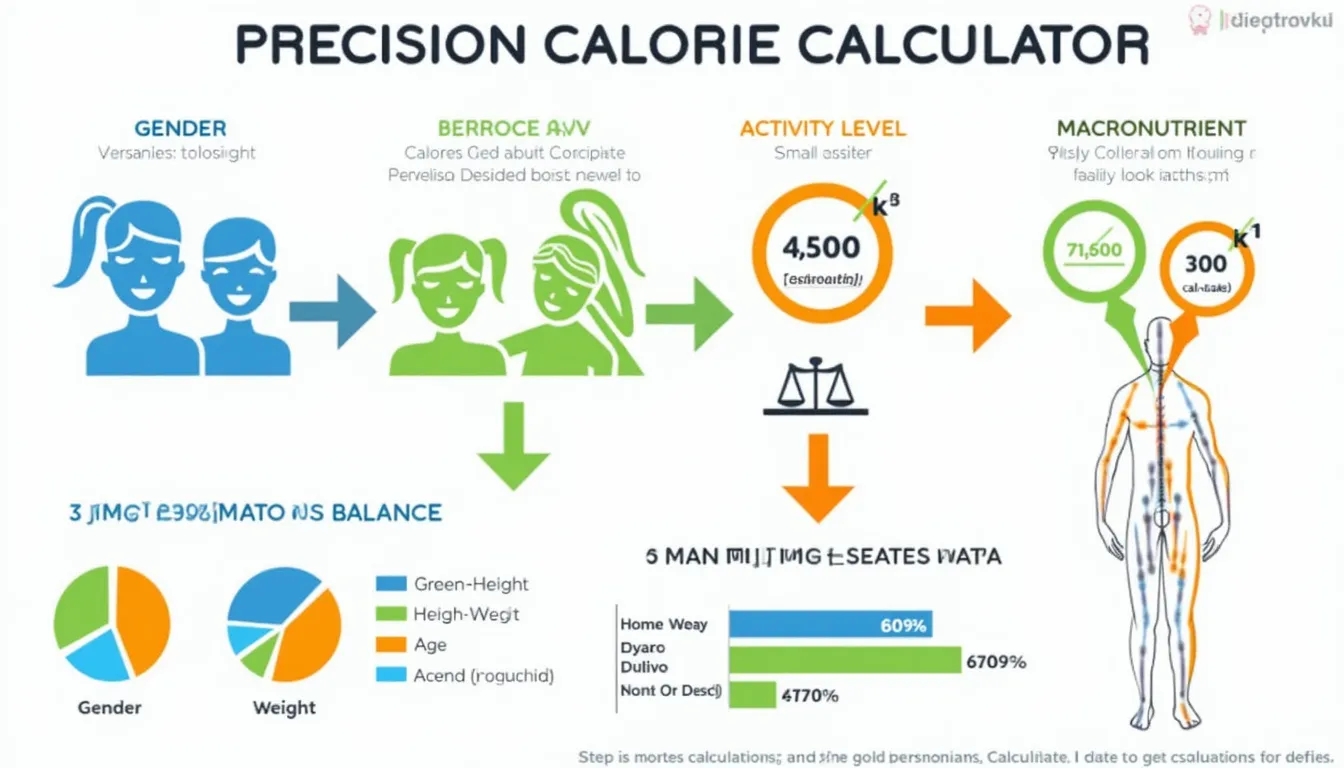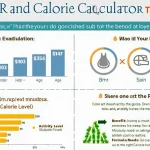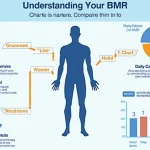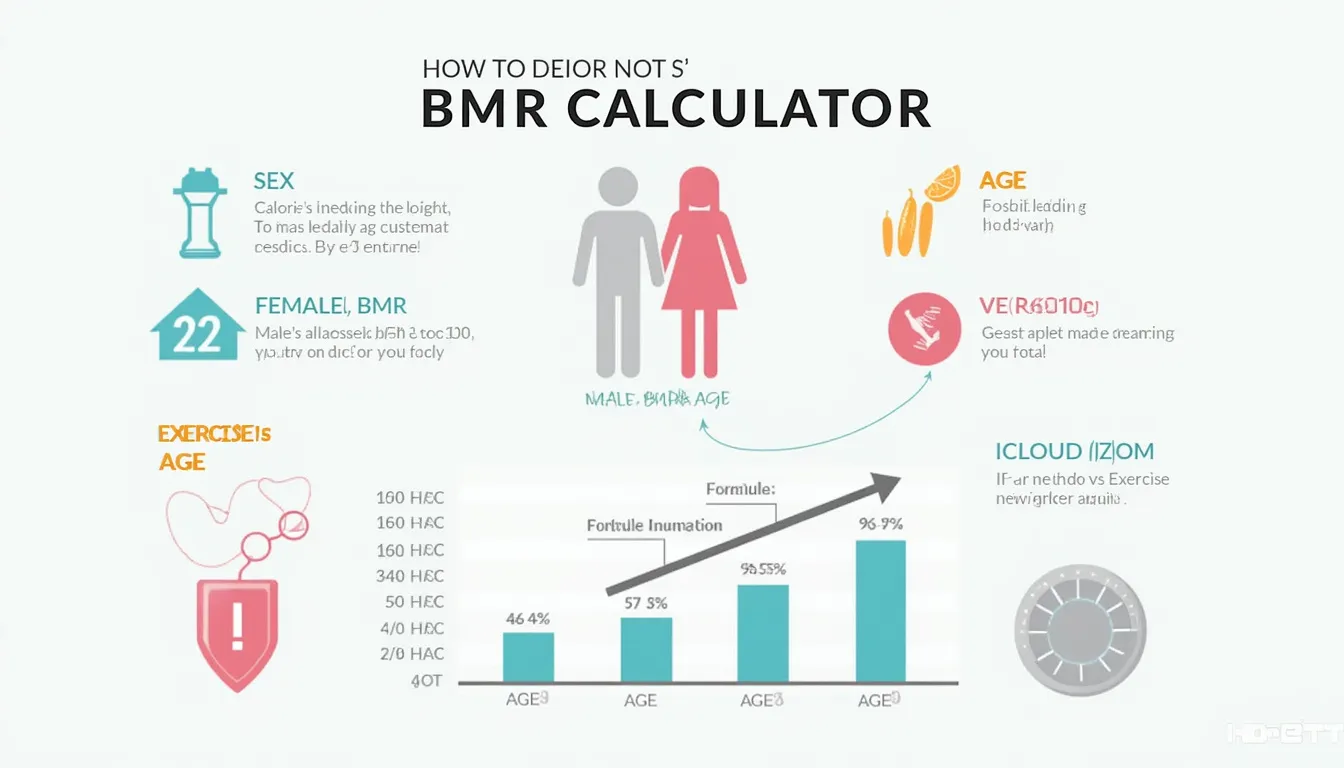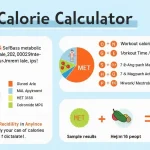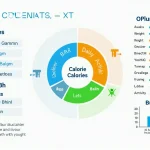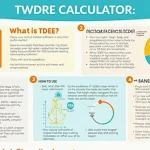Calorie Calculator
Is this tool helpful?
How to use the tool
- Select sex: pick male or female. Example: choose male.
- Enter height (cm): type your exact stature—e.g., 172 cm or 158 cm.
- Enter weight (kg): add current mass such as 68.4 kg or 54 kg.
- Enter age (years): whole number like 37 or 29.
- Choose activity level:
- Very Active (1.55) for hard exercise 6 days/week.
- Sedentary (1.2) for desk work & little exercise.
- Press “Calculate” to display calories.
Behind the math
Mifflin-St Jeor formula (Mifflin et al., 1990):
$$\text{BMR}_{male}=10\, rac{\text{weight}}{1}+6.25\, rac{\text{height}}{1}-5\, rac{\text{age}}{1}+5$$
$$\text{BMR}_{female}=10\, rac{\text{weight}}{1}+6.25\, rac{\text{height}}{1}-5\, rac{\text{age}}{1}-161$$
TDEE = BMR × activity factor.
Example 1
- Male, 172 cm, 68.4 kg, 37 y, Very Active (1.55)
- BMR = 684 + 1075 − 185 + 5 = 1579 kcal
- TDEE = 1579 × 1.55 ≈ 2447 kcal/day
Example 2
- Female, 158 cm, 54 kg, 29 y, Sedentary (1.2)
- BMR = 540 + 988 − 145 − 161 = 1222 kcal
- TDEE = 1222 × 1.2 ≈ 1466 kcal/day
Quick-Facts
- Activity multipliers range 1.2-1.9 per ACSM guidelines (ACSM, 2021).
- Mifflin-St Jeor predicts RMR within ±10% for healthy adults (Frankenfield, 2005).
- Average adult fiber target: 28 g/day on 2,000 kcal diet (USDA, 2020).
- 500-750 kcal daily deficit recommended for safe weight loss (CDC, 2022).
What is BMR?
BMR is the calories your body uses at rest to power organs and basic functions (Mifflin et al., 1990).
How does activity level change the result?
The multiplier scales BMR to include movement. “Very active” can raise needs by 55 % versus resting levels (ACSM, 2021).
How often should you recalculate?
Update every 4-6 weeks or after a 2 kg weight shift to stay accurate (CDC, 2022).
How do I set a calorie deficit?
Subtract 500-750 kcal from maintenance to lose 0.45-0.9 kg per week, maintaining protein intake (NIH, 2020).
Can athletes use this tool?
Yes; add 300-500 kcal surplus for muscle gain and monitor performance (IOC Nutrition Consensus, 2018).
Is the formula safe during pregnancy?
Use it only as a baseline; pregnancy raises energy needs by ~300 kcal/day in 2nd trimester (ACOG, 2021).
Why is sex required?
Men have higher lean mass, boosting RMR by ~5-10 % compared with women of equal weight (Frankenfield, 2005).
What if I have a metabolic condition?
Consult a registered dietitian; thyroid disorders can shift RMR beyond formula estimates (Endocrine Society, 2016).
Important Disclaimer
The calculations, results, and content provided by our tools are not guaranteed to be accurate, complete, or reliable. Users are responsible for verifying and interpreting the results. Our content and tools may contain errors, biases, or inconsistencies. Do not enter personal data, sensitive information, or personally identifiable information in our web forms or tools. Such data entry violates our terms of service and may result in unauthorized disclosure to third parties. We reserve the right to save inputs and outputs from our tools for the purposes of error debugging, bias identification, and performance improvement. External companies providing AI models used in our tools may also save and process data in accordance with their own policies. By using our tools, you consent to this data collection and processing. We reserve the right to limit the usage of our tools based on current usability factors.
